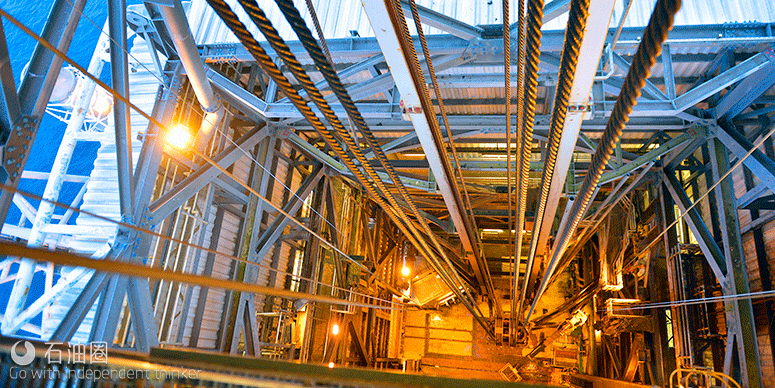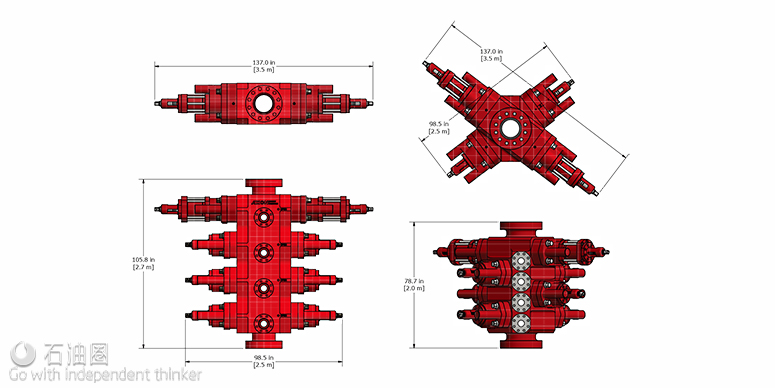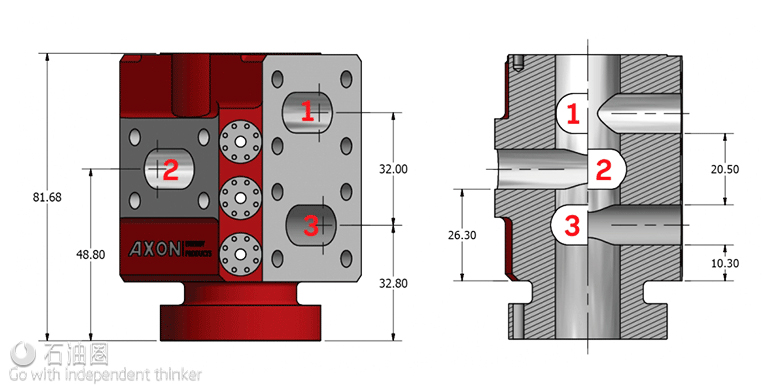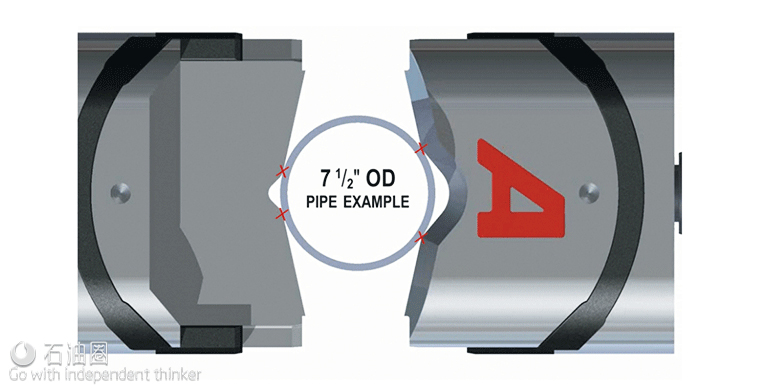Cost-Effective Control: AXON’s X-treme BOP Design
New solutions
Reliability is paramount in the industry due to its risk adverse nature. Regardless of how innovative and cutting edge a new idea may seem, these opportunities are often ignored. After all, when a tried and true method is already in place, why risk personnel safety, capital equipment cost, and downtime?
In the past, changes to this conservative approach were largely unnecessary because of easy access to natural resources. However, as drillers increasingly identify and develop new fields in more extreme environments, equipment and drilling processes evolve accordingly. In particular, the recent added emphasis on cost effectiveness, in conjunction with rising performance and safety demands, has generated heightened interest in novel solutions. An example of this pioneering movement involves a BOP design that is significantly different from traditional ram BOPs. The design is engineered with a unique, innovative pattern that significantly decreases weight and height – while also enhancing service life.
Brief background
Used extensively throughout the industry, typical BOPs involve a main body with various types of ram units attached. BOP stacks commonly utilise both ram and annular styles, with at least one annular BOP stacked above several ram BOPs. Ram units in the latter allow for shearing of the drill pipe and the subsequent sealing of the BOP.
Standard multi cavity ram BOPs customarily feature two or more cavities in a linear arrangement.
In contrast to in line cavities, the X-treme BOP design utilises an optimised orientation with staggered spacing between each cavity (Figure 1).
Comparison using A XON’s Type 50 11-5M Quad BOP with 3 standard operators & upper shear with booster.
Figure 1. Traditional (left): cavities are adjacent; new design (right): cavities are angularly offset.
This offset design arranges the ram cavities in closer proximity to one another along the bore while maintaining the same performance and safety. In the example above, the cavity angles are offset approximately 30 – 90˚. However, the angular offset can vary in accordance with specific customer requirements (without changing the number of cavities).
Features:
Substantially reduced weight and height
Cutting-edge design improves body stress
Especially useful in coiled tubing and other operations with space restrictions
Configurable to virtually any BOP type and size
Reduced height and weight
Perhaps the most apparent benefit to this design is the substantial decrease in height and weight. Intense drilling environments and new industry standards (e.g. requirement for dedicated shears) typically result in an increase in size for well control products. This increase can cause BOP stacks to exceed the limits of standard handling equipment. In addition to staying within capacity parameters for new builds, the design’s smaller footprint and weight allows for retrofitting that was not feasible in the past on older rigs. Retrofits on existing rigs tend to also cause longevity challenges due to the heavier loads placed on existing equipment.
Improved maintenance and longevity
The staggered spacing arrangement allows for simultaneous maintenance on multiple cavities, as well as easier access to service internal components. The design configuration also reduces body stress, as the supporting material between the in line cavities is increased due to the offset angles (Figure 2). Combined with decreased bending stresses derived from the reduced height, overall service life can be prolonged.
Figure 2. In contrast to standard in line cavities, the angular offset increases supporting material between cavities, resulting in alternate in line cavities (e.g. cavities 1 & 3 above).
Enhanced shearing capacity
The new BOP design’s offset cavity angles allow for improved safety and performance during shearing operations. In traditional ram BOP styles, an off centre drill pipe can potentially compromise shearing functions in all cavities due to their in line arrangement. If the drill pipe is not properly centred at the cross section, it could prevent the ram blocks from fully shearing and sealing. In contrast, attempting to shear the pipe at multiple angles provides a higher probability of centring and shearing the pipe. If the pipe is off centre at the cross section and becomes trapped between the ram block faces, it is possible to actuate one or more of the offset rams. The concurrent and/or subsequent actuations at alternate angles improve centring capabilities due to guidance from different directions.
Furthermore, advanced, pipe centring technology is incorporated into the BOP for a higher shear force and lower operating force. The patented design features specific shear blade geometry that guides the pipe closer to the bore centre. Moreover, its four point contact design creates high stress in localized areas (marked with red X annotations in Figure 3), thereby initiating crack propagation and/or pipe shearing at lower operational pressures. The resulting high stress levels allow the pressure to continue propagating for quick and effective shearing on a wide range of pipe sizes.
Figure 3. High stress is created in localized areas for quicker shearing.
Conclusion
Cost efficiency in today’s harsh drilling conditions can be cumbersome when also responding to strict industry standards. In turn, equipment manufacturers are faced with the challenge to develop economical solutions with a focus on reliability and serviceability. Due to the current status of the industry, it is becoming more common to veer from conventional methods and embrace innovative solutions. Age old problems can be solved with new ideas that improve equipment performance within budget parameters, while also enhancing value (e.g. compact footprint, versatility, ease of maintenance, longevity).
The increased emphasis on cost effectiveness is applicable not just to new builds, but also to existing field equipment. For instance, the X-treme BOP design is configurable to a variety of ram BOP types and sizes, including those currently operating in the field. Specifically, pre existing BOPs can be utilized by ‘retrofitting’ their internal components into the new body design. In addition to avoiding full costs associated with new equipment, another advantage is the BOP internals have already been tested and field proven for the operator’s particular application. Similarly, the aforementioned shearing technology can be integrated into a wide range of new and existing ram BOP styles. Manufacturers can provide added benefits to operators by designing products that are compatible and/or interchangeable with equipment already in their fleets. These versatile and customizable solutions are especially valuable when pursuing today’s extreme performance goals.


 石油圈
石油圈



